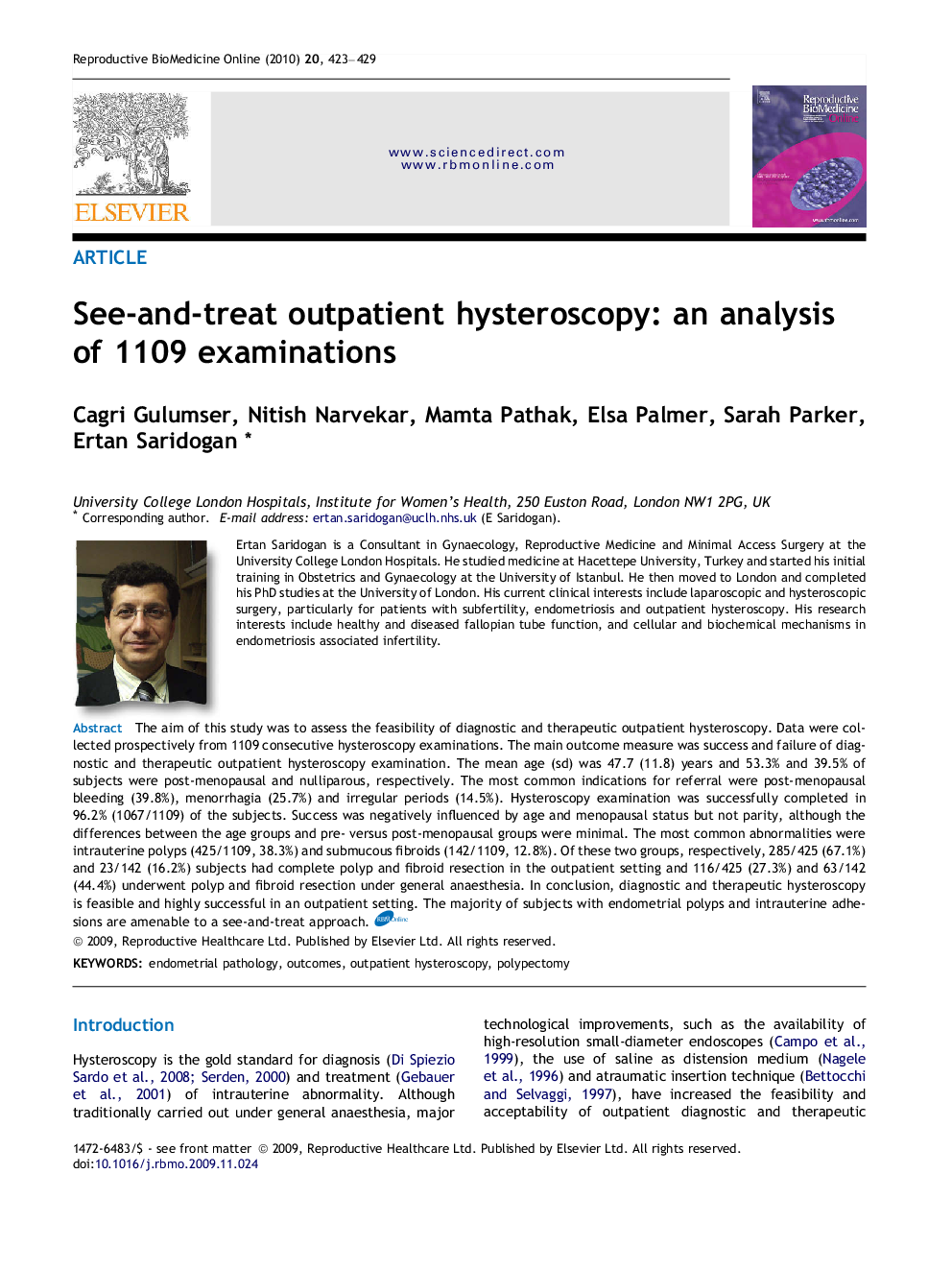| Article ID | Journal | Published Year | Pages | File Type |
|---|---|---|---|---|
| 3971548 | Reproductive BioMedicine Online | 2010 | 7 Pages |
The aim of this study was to assess the feasibility of diagnostic and therapeutic outpatient hysteroscopy. Data were collected prospectively from 1109 consecutive hysteroscopy examinations. The main outcome measure was success and failure of diagnostic and therapeutic outpatient hysteroscopy examination. The mean age (sd) was 47.7 (11.8) years and 53.3% and 39.5% of subjects were post-menopausal and nulliparous, respectively. The most common indications for referral were post-menopausal bleeding (39.8%), menorrhagia (25.7%) and irregular periods (14.5%). Hysteroscopy examination was successfully completed in 96.2% (1067/1109) of the subjects. Success was negatively influenced by age and menopausal status but not parity, although the differences between the age groups and pre- versus post-menopausal groups were minimal. The most common abnormalities were intrauterine polyps (425/1109, 38.3%) and submucous fibroids (142/1109, 12.8%). Of these two groups, respectively, 285/425 (67.1%) and 23/142 (16.2%) subjects had complete polyp and fibroid resection in the outpatient setting and 116/425 (27.3%) and 63/142 (44.4%) underwent polyp and fibroid resection under general anaesthesia. In conclusion, diagnostic and therapeutic hysteroscopy is feasible and highly successful in an outpatient setting. The majority of subjects with endometrial polyps and intrauterine adhesions are amenable to a see-and-treat approach.
